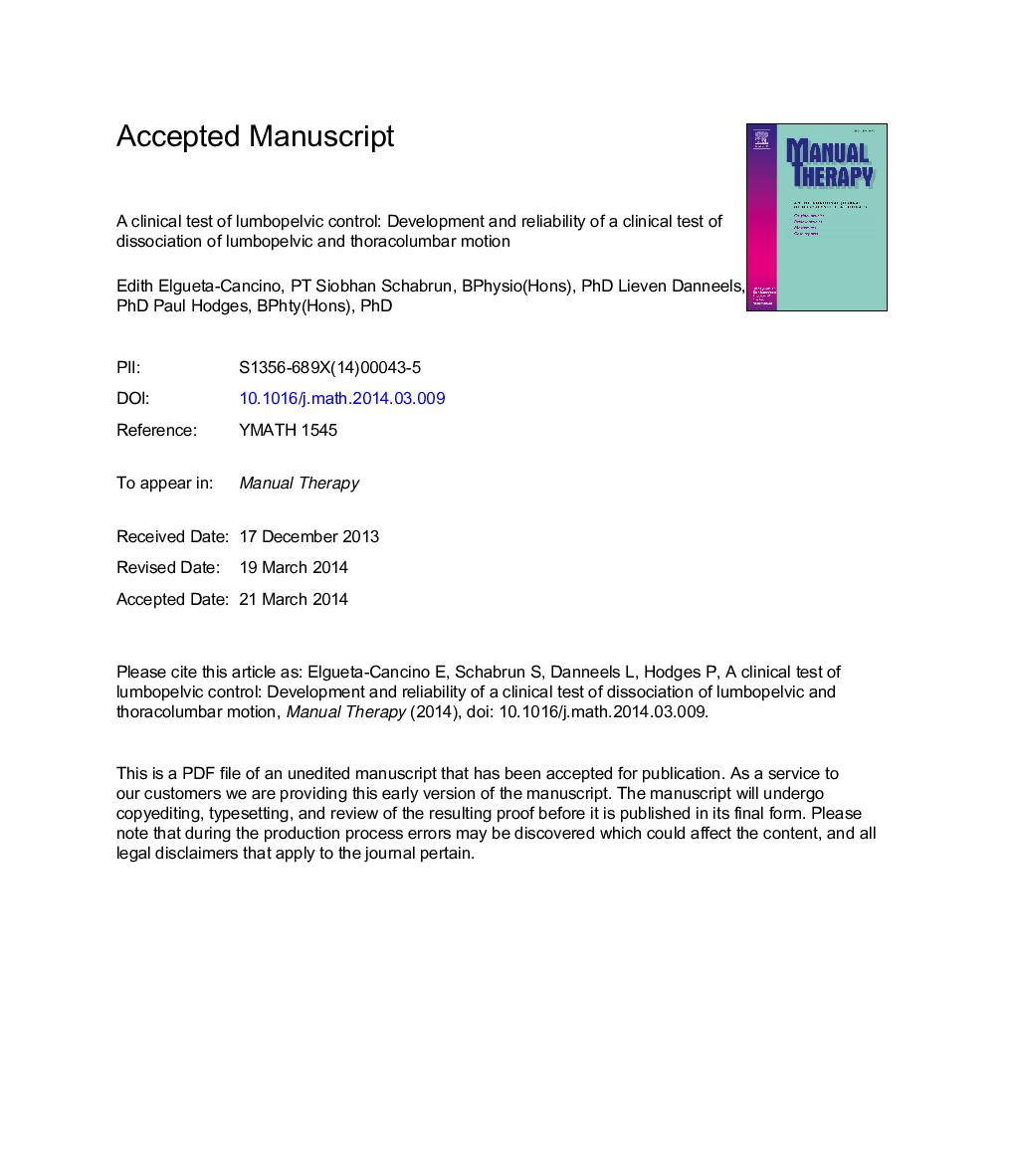| Article ID | Journal | Published Year | Pages | File Type |
|---|---|---|---|---|
| 5864733 | Manual Therapy | 2014 | 33 Pages |
Abstract
LBP is often associated with changes in motor control. Some subgroups of LBP have been argued to have a compromised ability to dissociate lumbopelvic movement from that of the thoracolumbar junction. Clinical methods to evaluate this task may aid identification of this LBP subgroup and determine the utility of this information to guide clinical interventions. The study aimed to develop a clinical test to assess the ability to dissociate lumbopelvic movement from that of the thoracolumbar junction, and to evaluate the inter-rater reliability of the test in individuals with and without low back pain (LBP) when performed by experienced and novice therapists. A clinical scale was developed to characterise quality of performance of lumbopelvic motion with limited motion at the thoracolumbar junction. Inter-tester repeatability was measured in three experiments. Test outcomes for pain-free controls were compared between three assessors with different amounts of clinical experience. Test scores for LBP participants were compared between two assessors, and between assessments undertaken from video recordings. Agreement between assessors was tested with weighted Kappa Coefficient. The test had acceptable reliability in pain-free and LBP participants, but was better when undertaken by experienced therapists. Kappa index ranged from 0.81 to 0.66 for live assessments, and 0.62 for video assessments. The results showed that the test is reliable when performed by experienced assessors. The test can assess thoracolumbar movements in different groups of individuals.
Keywords
Related Topics
Health Sciences
Medicine and Dentistry
Complementary and Alternative Medicine
Authors
Edith Elgueta-Cancino, Siobhan Schabrun, Lieven Danneels, Paul Hodges,
